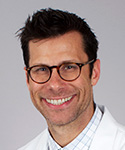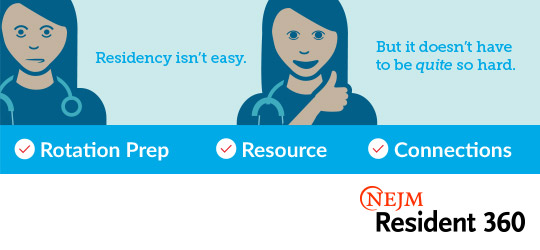September 27th, 2017
Thoughts on Caring for Sexual-Minority Patients
David Herman, MD

David Herman, MD, is a 2017-18 Chief Resident in Internal Medicine at the University of Southern California / LAC+USC Medicine Center in Los Angeles
According to recent polling, approximately 4% of the population of the U.S. identifies as gay, lesbian, or bisexual, which equates to more than 10 million people scattered from coast to coast. In truth, this number likely underestimates the true prevalence. Despite the progress that we have made as a nation towards LGB acceptance and equality, people who identify as LGB still experience discrimination and hate, such that many feel pressured to remain “in the closet.” Even those who do open that closet door often live in the daily reality that, in many ways, in many minds, and in many places, they remain second-class citizens.
I am one of them, a gay man who lives in West Hollywood, California. I count myself fortunate in that I have lived, worked, and studied among accepting individuals and in accepting institutions; aside from the adolescent and early adult struggles that I experienced prior to coming out — teasing and name-calling, feelings of inadequacy, fear of disappointing those around me, all of which are relatively common amongst my LGB peers — I have emerged relatively unscathed and now live a life in which I feel supported, and which gives me opportunities that I am thankful for on a daily basis.
Yet, I am reminded frequently that my sexual orientation classifies me as a vulnerable minority. The recent rescinding of protections for transgender military personnel (Note: my omission of transgender individuals prior to this is intentional, as I believe that the topic of transgender people and their healthcare deserves special attention: I will be addressing that in a future blog), the numerous attempts to pass “Religious Freedom” bills around the country, and the still deep wounds inflicted by the senseless tragedy in Orlando, Florida, for example, remind me that we still have far to go to achieve true equality, legally and beyond, and that we remain in many ways, the targets of a discriminatory society. I am further reminded of this when I read the news or watch the talking heads debate our rights on cable television — as though arguments to codify our status as second-class citizens are valid ones to be discussed and are not simply discriminatory statements. And all of these things are contributing factors in the overall poorer health of LGB youth compared with their heterosexual peers. Mental health, especially, is affected: studies have demonstrated significantly higher rates of mood and anxiety disorders, higher rates of depression, and a dramatically higher rate of suicide attempts and ideation amongst LGB people.
So, as a gay man, I do the best I can to channel my feelings into promoting and expanding the health and welfare of my community. As a gay doctor, however, this strikes a different chord in me. It is not solely because of obvious health disparities that exist amongst members of the LGB community, although they are real and extensive and, many times, inadequately addressed in healthcare settings (NEJM JW Gen Med 2016 Aug 1 and JAMA Intern Med 2016; 176:1344). Higher rates of sexually transmitted infections in men who have sex with men (with the growing emergence of antibiotic-resistant organisms), dramatically lower rates of adherence to national guidelines for cervical cancer screening amongst lesbian women, higher rates of smoking and substance use and abuse amongst LGB people in general — these should be of concern to all physicians in Internal Medicine, especially as we shift more of our focus toward preventative care. The National LGBT Health Education Center, a program of the Fenway Institute, has a tremendous amount of resources to address some of these specific concerns, and I would challenge you to access their materials to educate both yourself and your peers and keep up to date on very pertinent issues that affect your LGB patients.
LGB Patients Sometimes Fear the Healthcare System
 My fear is that those of us in the medical profession avoid many basic issues of sexuality and orientation. In 2003, for instance, a survey published in the Journal of Homosexuality revealed that 71% of medical residents did not regularly ask sexually active adolescents about sexual orientation; when pressed, 93% reported that this was because they were too uncomfortable to do so (J Homosex 2010; 57:730). In 2002, 6% of physicians surveyed by the Kaiser Family Foundation reported that they were uncomfortable treating gay or lesbian patients. Attitudes can change, of course, and these surveys were conducted over a decade ago. Yet, a recent publication in the American Journal of Public Health revealed that amongst 200,000 surveyed healthcare providers, including physicians, implicit preferences toward heterosexual patients over members of the LGB community existed among heterosexual providers (Am J Public Health 2015; 105:1831). This attitude (whether conscious or unconscious) further solidifies the already thick wall that exists around many LGB people, one built of distrust for the medical profession due to fear of judgment or discrimination and a history of both: It was not long ago that we doctors classified homosexuality as a mental disorder. And these fears are present even among our peers: A 2015 study in Academic Medicine concluded that sexual and gender minority medical students often conceal their identity during training (nearly 30% of such students), with nearly half of concealing students reporting fear of discrimination (Acad Med 2015; 90:634).
My fear is that those of us in the medical profession avoid many basic issues of sexuality and orientation. In 2003, for instance, a survey published in the Journal of Homosexuality revealed that 71% of medical residents did not regularly ask sexually active adolescents about sexual orientation; when pressed, 93% reported that this was because they were too uncomfortable to do so (J Homosex 2010; 57:730). In 2002, 6% of physicians surveyed by the Kaiser Family Foundation reported that they were uncomfortable treating gay or lesbian patients. Attitudes can change, of course, and these surveys were conducted over a decade ago. Yet, a recent publication in the American Journal of Public Health revealed that amongst 200,000 surveyed healthcare providers, including physicians, implicit preferences toward heterosexual patients over members of the LGB community existed among heterosexual providers (Am J Public Health 2015; 105:1831). This attitude (whether conscious or unconscious) further solidifies the already thick wall that exists around many LGB people, one built of distrust for the medical profession due to fear of judgment or discrimination and a history of both: It was not long ago that we doctors classified homosexuality as a mental disorder. And these fears are present even among our peers: A 2015 study in Academic Medicine concluded that sexual and gender minority medical students often conceal their identity during training (nearly 30% of such students), with nearly half of concealing students reporting fear of discrimination (Acad Med 2015; 90:634).
Clearly, we need to do better, for our patients and for ourselves. The first step in addressing the many health disparities that exist in the LGB community is to confront the issues that we, as a medical community, have with sexuality and orientation. That is where we, as residents, especially as residents in Internal Medicine, can take a special role. Residents are the next wave of attending physicians in community and academic centers across the nation, and we have the opportunity to re-create atmospheres that have traditionally been less than inviting to those with differing sexual orientations. Furthermore, as residents now, we are often the first ones to take full histories for our patients, the first one to see them in the ambulatory setting, and the ones that strategize with them to establish treatment or follow-up plans, which leads to continuity and building of lasting relationships. To do this well, we need to know our patients; and this includes understanding their sexual orientation and how it directly and indirectly affects aspects of their lives. I can recall the first time that my physician asked me about my sexual orientation; it changed our therapeutic relationship immediately as I felt a comfort level as of then unachieved, and allowed me to discuss issues openly and honestly to the betterment of my own health.
Caring for LGB Patients
So… what are some steps that we as medical professionals can take?
- Strive to create a welcoming, supportive environment in which to care for and learn from your patients.
- Focus on your attitude, demonstrate your willingness to work with others, and be open to the situations of your patients without the perception of judgment or preconceived notions.
- Get to know your patients outside of their medical complaints.
- Use inclusive language; avoid assuming someone’s sexual orientation or the gender of his or her partner, for instance.
- Make your line of questioning regarding sexuality and sexual orientation routine for all patients; this will normalize the discussion for you and your patients and will help to ease some of your discomfort as you continue to practice.
- Take a full sexual history of all your patients and understand the screening guidelines; many members of the lesbian, gay, and bisexual community require special consideration for screening for sexually transmitted infection, for instance, or special attention to substance abuse and mental health.
- Acknowledge your own discomfort or ignorance (if any) and work to move past it.
- Ask for clarification of words or topics that you do not understand; your patients will be happy to explain and this will give you an opportunity to not only learn about your LGB patients specifically but also to learn about them in general.
The LGB community is a strong one whose history is driven by resilience and survival. But that history has been marked by judgement, discrimination, and persecution, and that history affects each member of the community differently. It is important that we, as healthcare providers, respect this history and work to build strong and lasting relationships with our LGB patients. It is in this way that we can truly start to address the health disparities that this community experiences.




Awesome article!! Well written and practice changing!
Great article that brings light to a vulnerable population of patients. Having undergone residency in Los Angeles, I have thankfully seen many residents who make the effort in their patient interactions to foster a safe/tolerant environment for their LGBT patients. Dr. Herman highlights something we often forget to do in our busy practices, getting to know our patients outside of the medical complaint. Thank you for the reminder.
Excellent article. I appreciate you highlighting how we can do better as residents and the importance of providing a welcoming and affirming environment for our LGBT patients. Looking forward to your trans health article.